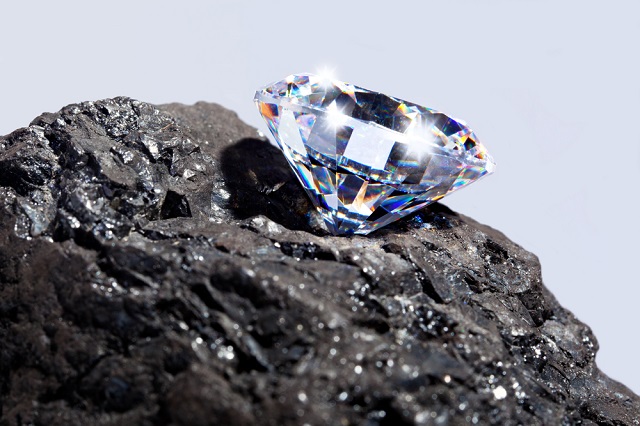
RTimages | Shutterstock
A new study has claimed that the formation of diamonds is not as rare as many believe.
Diamond formation in the deep Earth, the very deep Earth, may be a more common process than we thought
Prof. Dimitri A. Sverjensky - Johns Hopkins University
The diamonds available near the Earth's surface are largely introduced by volcanic magma eruptions. These eruptions raise diamonds from the deep depths of the crust where they are formed. However, such eruptions are rare, making diamonds one of the most expensive, and desired, raw materials on the planet.
In the study, the diamonds being studied are just a couple of microns across, meaning they cannot be seen with the naked eye. Diamonds that you can't see are never going to look great on a necklace. So as a result this study isn't going to lead to cheaper diamond jewelery.
Researchers at the Johns Hopkins University, including Prof. Dimitri A. Sverjensky, explored the chemistry behind diamond formation to discover that micron sized diamonds could be created using far more basic chemical reactions than those used in current diamond producing processes.
Their model demonstrated that increasing the acidity of the water in the rocks surrounding the diamonds as they form results in a higher yield. However, so far, this study is all theoretical and has not yet been tested using real materials.
Hisotrically the common consensus has been that diamond formation occurs in the fluid movement as a result of chemical reactions such as methane oxidation and carbon dioxide reduction in the high pressure and high temperature fluid beneath the Earth's mantle.
Oxidation reactions involve a species gaining electrons, resulting in a higher oxidation state, whilst reductions involve a species losing electrons, resulting in a lower oxidation state. As these two reactions occur simulataineously, i.e. one species is oxidised as another is reduced, the reactions are grouped together as redox (reduction-oxidation) reactions.
It was always hard to explain why the redox reactions took place
Prof. Dimitri A. Sverjensky - Johns Hopkins University
The redox reactions need different fluids to move through the rocks and pass directly over one-another in order to intorduce species of different oxidation states.
This study demonstrated that diamonds could be produced by water when it became more acidic, which can occur naturally as it passes through different types of rock.
The more people look, the more they’re finding diamonds in different rock types now. I think everybody would agree there’s more and more environments of diamond formation being discovered.
Prof. Dimitri A. Sverjensky - Johns Hopkins University
Until now no solid estimate of the quantity of diamonds available has been made. Sverjensky states that by understanding all of the chemical processes that result in diamond formation an accurate estimate can be made.
Diamonds need extreme conditions to be produced. They are formed at depths of 90-120 miles into the Earths crust where temperatures range between 1,650 and 2,000°F and the pressure is extremely intense.
However, the maximum depth that has been drilled tois only 10% of this at 9 miles below the Earth's surface.
While the results of the study may not help create cheaper diamonds, it could provide better understanding about the fluid movement that takes place deep beneath the Earth's surface. This fluid motion is linked to the carbon cycle that all life on the Earth depends upon.“Fluids are the key link between the shallow and the deep Earth,” Sverjensky said. “That’s why it’s important.”
The Sloan Foundation has supported the study through Deep Carbon Observatory grant. The U.S. Energy Department has also supported the research through a grant.
The study paper has been published online in the journal, Nature Communications.